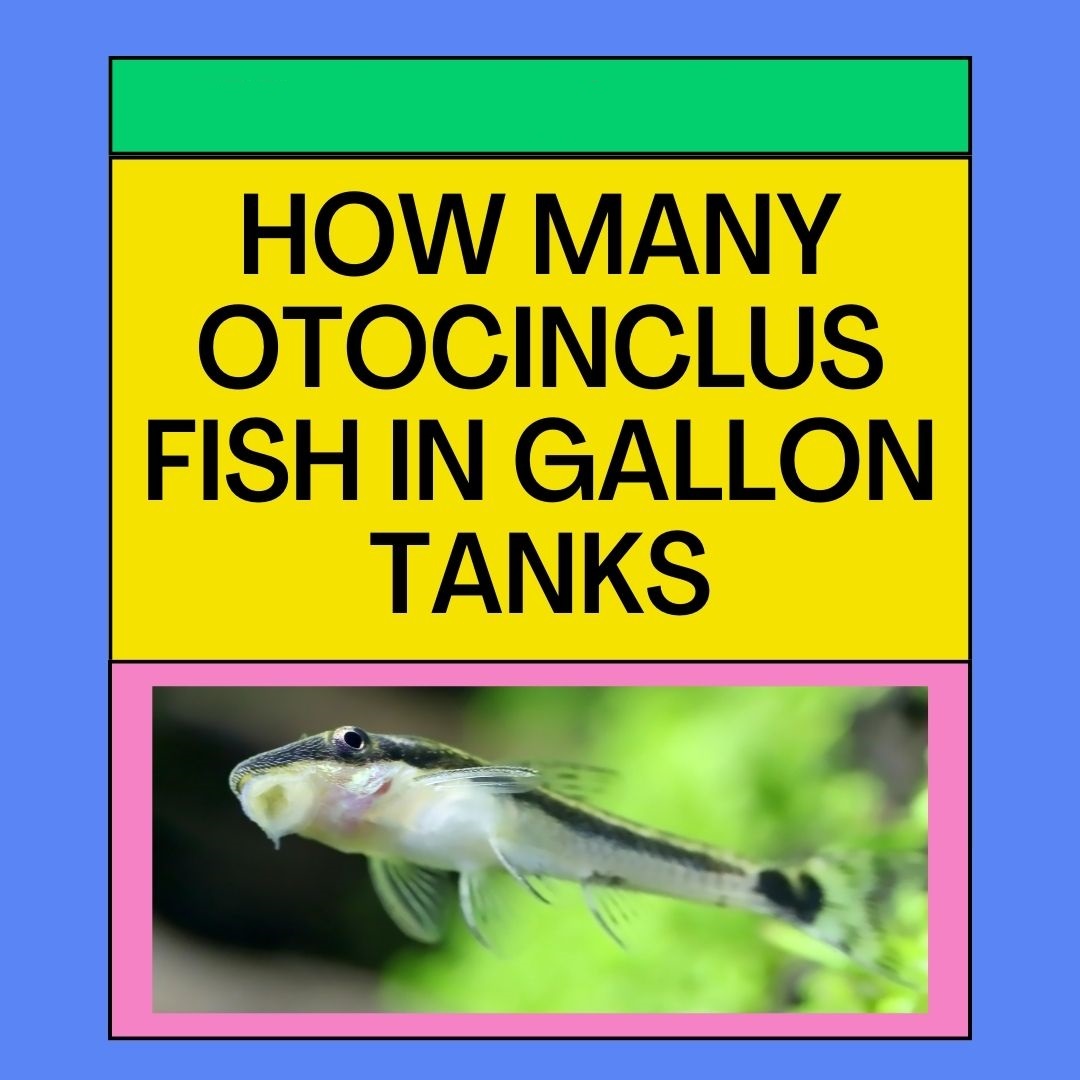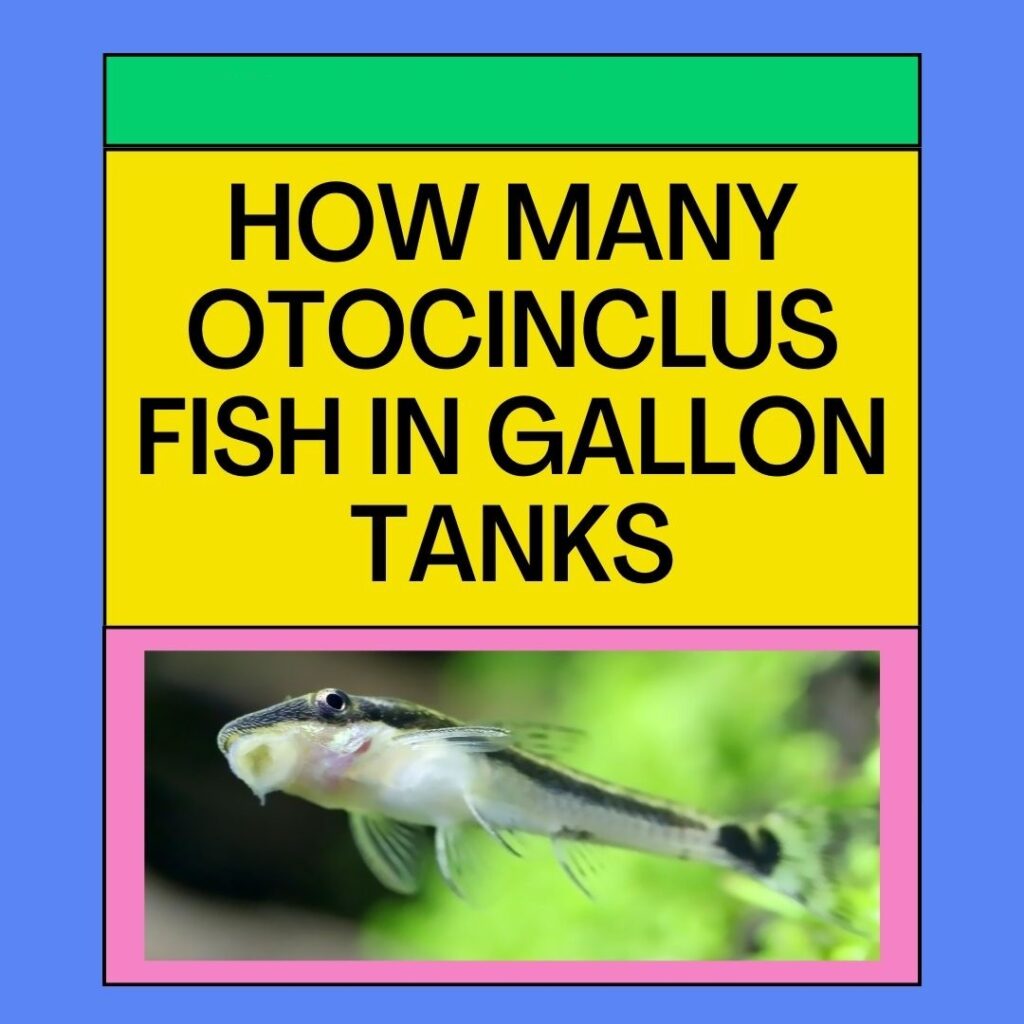
Otocinclus are an interesting fish to keep as well as a pastime. However, many individuals are unaware of how the quantity of otocinclus is affected by the tank size.
So, how many otocinclus in different gallon tanks we can safely keep? How many otocinclus can you keep together? Can I keep just 3 otocinclus?
According to the usual rule of thumb, every inch of fish needs a gallon of water to swim in. But there are other elements as well. The size of the fish might change depending on its maturity. When breeding otocinclus, additional parameters including tank mates and the number of plants are important.
You could still be unsure of it. Do not be concerned; otocinclus upkeep is the subject of this entire essay. Therefore, let’s begin.
What Is Otocinclus?
The otocinclus is a freshwater catfish. They are reported to come in 22 different species. These little fish may reach lengths of two inches. They can show up in a variety of hues. Typically they have a brown line running horizontally down their body.
Fish called otocincluses are timid and quiet. They are well-liked by aquarists due to their propensity for consuming algae. These fish can’t live in a tank with other aggressive or predatory fish since they are calm.
Slow-moving shallow rivers and streams are a popular habitat for otocinclus catfish.
The fish cling to rocks, and other firm surfaces in their natural environment to eat algae. In this ecosystem, the waterways are just lightly vegetated. The channels also have easy access to sunshine and a riverbed made of soft sand.
The otocinclus is a little fish that can reach a length of 2 inches. When seen from above, females are wider and bigger than men.
As long as it’s adequately cared for, the otocinclus has a 3-5 year average lifetime in captivity.

What Are Their Typical Behavior?
Otocincluses are cautious, solitary creatures with unusual eating habits. When they feel danger they can swim quickly, and dash across the tank to find cover. They want to avoid conflict since they are naturally passive.
They are primarily nighttime fish. The majority of their time is spent mouth-latched to objects near the tank’s bottom. They gather in clusters and feed on the algae.
With other tranquil fish, they get along nicely. But when they are surrounded by other otos, they feel most assured. On rare occasions, otocinclus catfish will surface-swim to the air. Especially if there is a paucity of oxygen in the water.
What Is The Tank Requirement For Otocinclus?
Otocinclus fishes are social in nature. Thus, they find it safer and more convenient to live in huge groups. Thousands of fish can be found in an otocinclus herd in the wild. Because of this, you ought to have at least six otocinclus in your aquarium.
Having stated that, a larger group is preferable. Aim to keep 10 to 20 of these in our tank, if we have the room.
All we need to do is make sure our otocinclus has lots of room to swim around. Fortunately, because they are little, these fish don’t require much room. An inch of fish needs one gallon of the area to swim, on average. They should be OK as long as we keep doing this.
Otocinclus In 3 Gallon tank
If we adhere to the “1 inch of fish per gallon of water” maxim, we can utilize a 3-gallon tank. Three 1-inch fish can fit in a 3-gallon aquarium. But as time goes on, the fish will get bigger in size. When that happens, you have to change the aquarium.
Otocinclus In 5 Gallon Tank
A 5-gallon tank could be a tad small for otocincluses. However, two might operate in a 5-gallon. Just need to watch them closely to make sure they’re eating enough. For a number of reasons, the majority advise bigger tanks.
But most importantly to make sure they have plenty to eat or to graze on. We can also put clay pots in the aquarium. It will create a better environment.
Otocinclus In 10 Gallon Tank
A 10-Gallon fish tank can house roughly 4-6 Otocinclus Catfish. However, a variety of other variables also influence this figure. These can include the fish’s tank mates, size, and other factors. So if necessary, you might have to change the tank.
No of Otocinclus In 15 Gallon tank
Normally, 5-7 ottos may live well in a 15-gallon tank. Make sure the tank has adequate vegetation before proceeding, though. Otos require enough room to swim about unrestricted. The Otos should feel at ease, and it is what you should pay special attention to.
Otocinclus In 20 Gallon Tank
In the wild, otocinclus fish lives in shoals numbering in the thousands. We must thus maintain at least 6 in our aquarium. Better would be 10 or 15. But a larger tank is required for this. In a 20-gallon tank, we can easily maintain 6–8 Otos.
Otocinclus In 29 Gallon tank
Initially, make sure the 29-gallon tank has a fair amount of vegetation. We can place 12–15 otos once the lighting has been corrected throughout. Stay within the bounds. If every oto has reached adulthood, we could require a larger tank.
Otocinclus In30 Gallon Tank
The oto limitation for a 30-gallon is very similar to a 29-gallon. We should put a similar number of otos in a 30-gallon tank. But don’t over-exceed. It will create a bad environment for the otos.
Otocinclus In 40 Gallon Tank
15 to 18 otos are perfect for a 40-gallon tank. Follow this when all our otos are fully matured at 2.2 inches. As they are social creatures, the more we keep together, the better the outcome.
Otocinclus In 55 Gallon Tank
We can keep up to 20 to 22 otos easily in your 55-gallon tank. We can continue to do this even if they are fully grown. All we have to do is create a nice environment in the tank for them. As more of them are together, the output will be higher.
What Is The Water Condition For Otocinclus?
Whichever Otocinclus species we own is irrelevant. The same kind of water is needed for all of them. The water type should be low stock density and clear water. We can take advantage of a RO system to figure this out.
We’ll require a kind of canister filter for your aquarium. It can cycle the water in our aquarium at least four times every hour. This is crucial since Oto catfish are delicate to low-quality water. To reduce nitrite and ammonia levels, an effective filter is needed. A few filters are below that are pretty good in the market.
| Products | Price |
| Tetra Whisper IQ Power Filter | $18.99 |
| AquaClear 50 Power Filter | $40.74 |
| Marineland Magniflow | $144.49 |
We must maintain nitrate levels between 0-20 ppm while having no detectable ammonia or nitrite levels.
A constant pH is preferred for otos. Usually, this level is a bit acidic (6-7.5). The water should be between 72 and 82 degrees Fahrenheit. It’s crucial to keep the ideal temperature and ph levels.
We should always have enough plants in our aquariums. Additionally, we should carry out weekly 25–30% water changes. It will assist us in maintaining the highest level of water purity. So disposing of aquarium water is necessary.
FAQs
How Long Does Otocinclus Fish Live?
Feeding on the available algae, otocinclus catfish merrily swim about with their round bellies. The fish will have a happy life in our aquarium by spending $4 on just one fish. Otocinclus catfish may live for 5-7 years in good condition.
Do The Otocinclus Fish Produce A Lot Of Waste?
Otocinclus do really generate a lot of garbage. They munch on the algae all around the tank continuously. So we can manage the algae development in the tank with the aid of the otocinclus. But they also consistently generate garbage on their own.
Is Otocinclus Catfish Hard To Maintain?
It’s a common misconception that caring for otocinclus catfish is simple. Most of the time, providing care should be simple and direct. But maintaining Oto catfish may be challenging. They are fragile freshwater aquarium fish, which explains why.
Conclusion
Now we have the answer to How Many Otocinclus In Different Gallon Tanks. It may be challenging for you to breed them if you are just starting out.
So you can only achieve the best results after setting the ideal environment. Decide on the appropriate tank size based on your needs.
I wish you luck breeding Pea Puffers!
